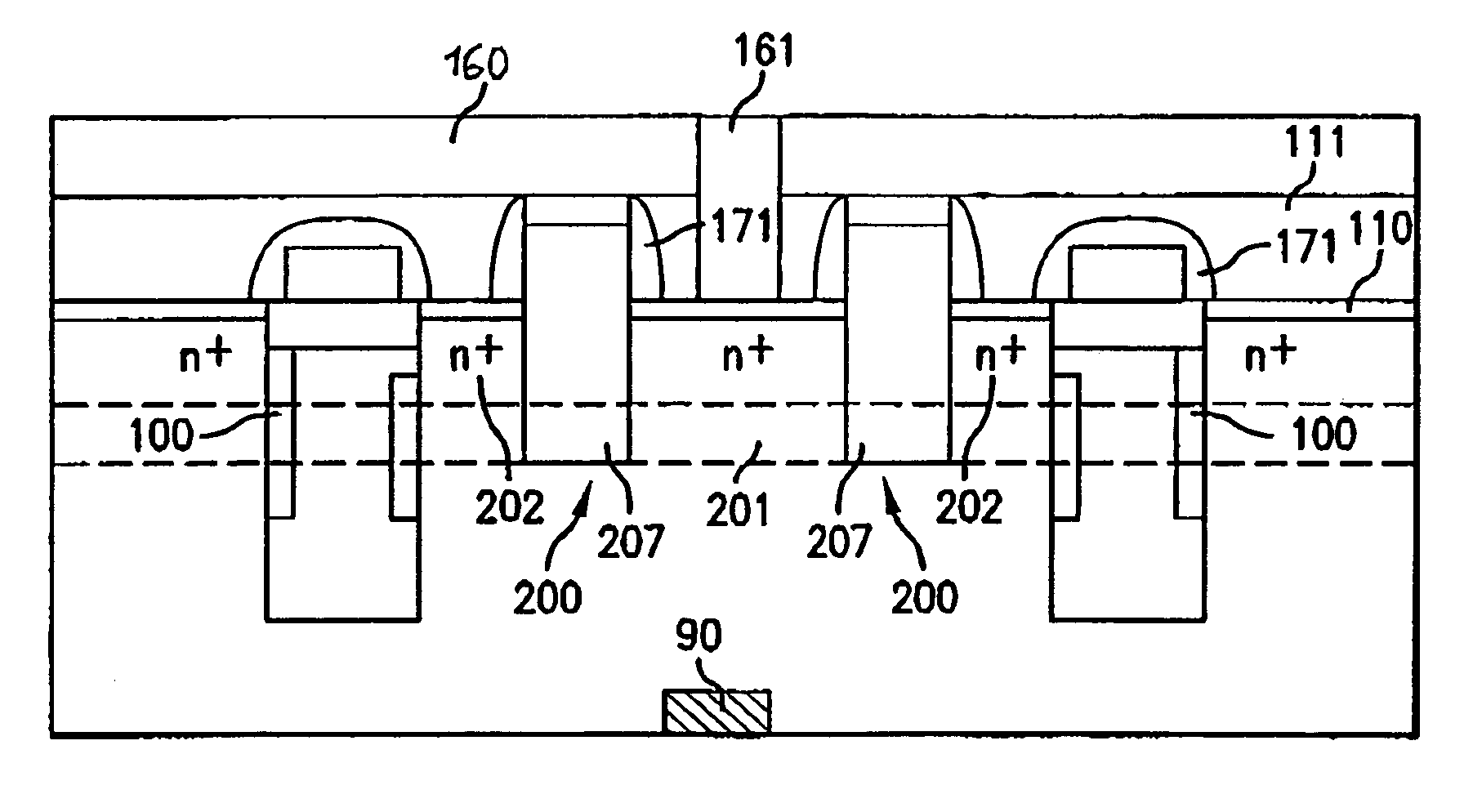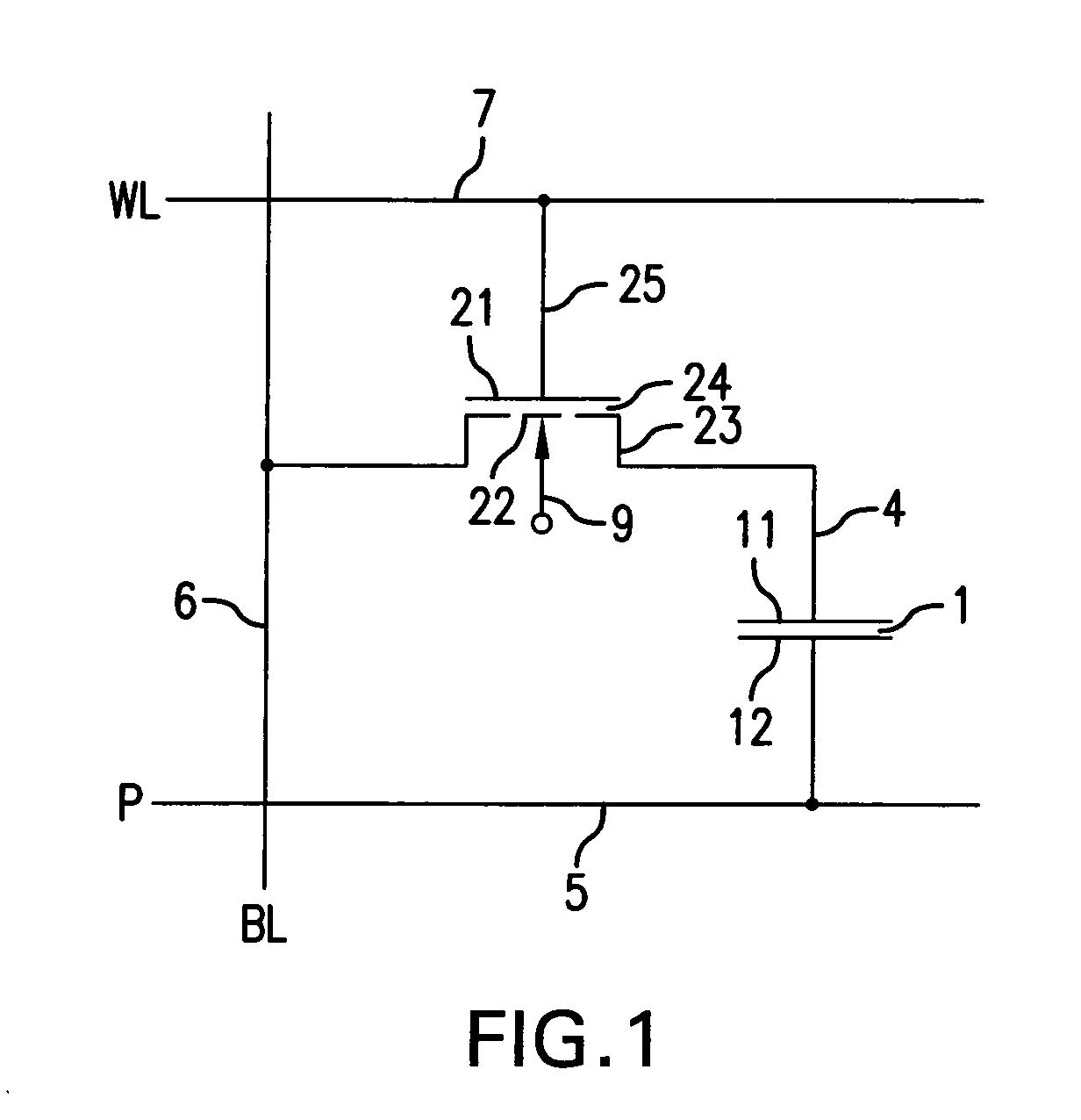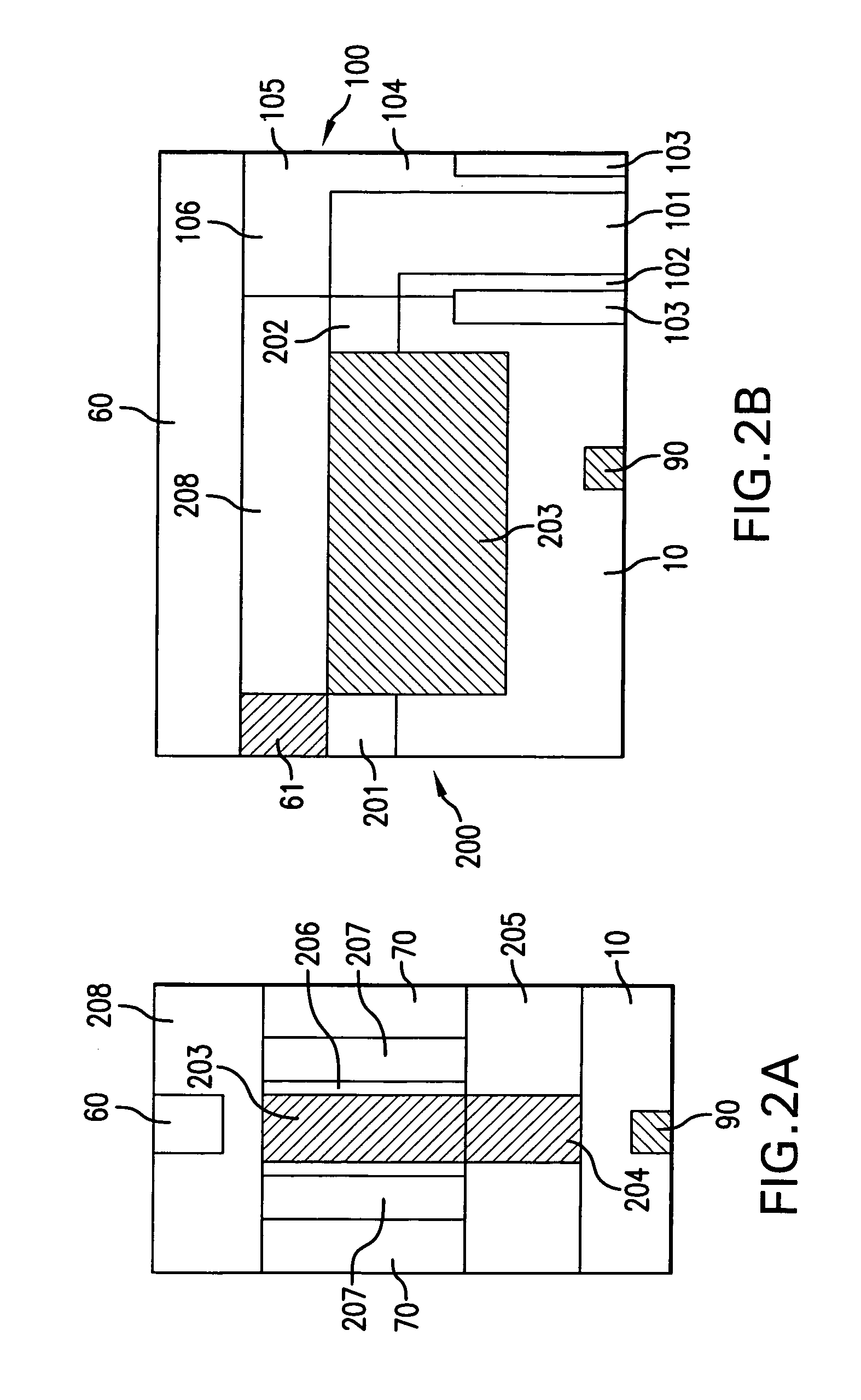DRAM memory cell
a memory cell and memory technology, applied in the direction of transistors, electrical devices, semiconductor devices, etc., can solve the problems of increasing the width of the planar junction transistor, increasing the leakage current, and increasing the current driver capability of the transistor, so as to achieve good current flow, high carrier mobility, and low doping
- Summary
- Abstract
- Description
- Claims
- Application Information
AI Technical Summary
Benefits of technology
Problems solved by technology
Method used
Image
Examples
second embodiment
[0043]FIG. 3 shows a DRAM memory cell according to the invention with a double gate transistor. In this embodiment, as shown in particular by the longitudinal section in FIG. 3B, the storage capacitor 300 is formed as a stacked capacitor arranged essentially over a selection transistor 400. In this case, the stacked capacitor 300 has an inner capacitor electrode 301 at the semiconductor surface 10, which electrode has, in cross section, essentially the form of a crown (only partly shown) and preferably comprises a highly n-doped polysilicon layer. The inner capacitor electrode 301 is enclosed by a dielectric layer 302, which is in turn bordered by an outer capacitor electrode 303 (only partly shown) preferably embodied in block-type fashion, which outer capacitor electrode is formed as a highly n-doped polysilicon layer. The inner capacitor electrode 301 is connected via a contact block 304, preferably a highly n-doped polysilicon layer, to a second source / drain electrode 402 of the...
first embodiment
[0048]By means of suitable doping profiles of the channel region of the double gate field-effect transistor according to the invention, it is furthermore possible to improve the current driver capability and also its switching behavior. FIG. 4A shows a cross section through a transistor structure which essentially corresponds to the first embodiment shown in FIG. 2 with a web-like channel region 500 on the semiconductor substrate, which is laterally enclosed in a lower region 504 by an insulator layer 502 adjoined by a thin gate oxide layer 503, which separate lateral gate electrode sections 507 from an upper channel region 501. In this case, the channel region has a channel width W and a channel height Z, corresponding to the height of the gate electrode section 507.
[0049]FIG. 4B shows, on a logarithmic scale, input characteristic curves on such a Fin-FET in the case of a channel length L of 50 nm and a channel width W of 20 nm. In this case, the source / drain electrodes are arsenic...
PUM
 Login to View More
Login to View More Abstract
Description
Claims
Application Information
 Login to View More
Login to View More - R&D
- Intellectual Property
- Life Sciences
- Materials
- Tech Scout
- Unparalleled Data Quality
- Higher Quality Content
- 60% Fewer Hallucinations
Browse by: Latest US Patents, China's latest patents, Technical Efficacy Thesaurus, Application Domain, Technology Topic, Popular Technical Reports.
© 2025 PatSnap. All rights reserved.Legal|Privacy policy|Modern Slavery Act Transparency Statement|Sitemap|About US| Contact US: help@patsnap.com



